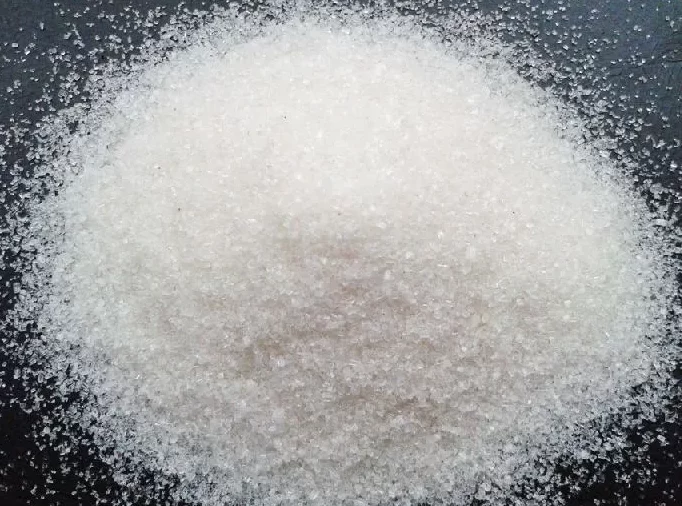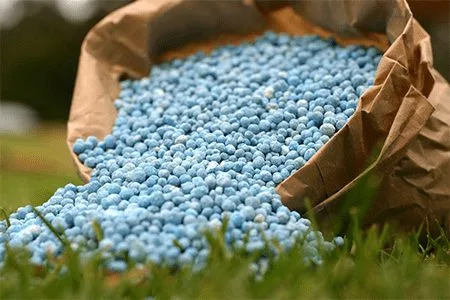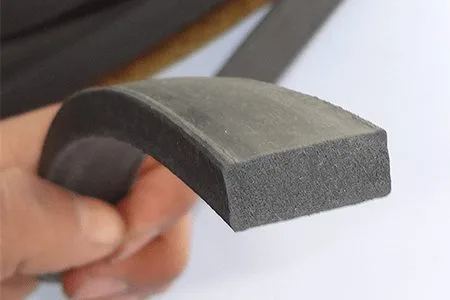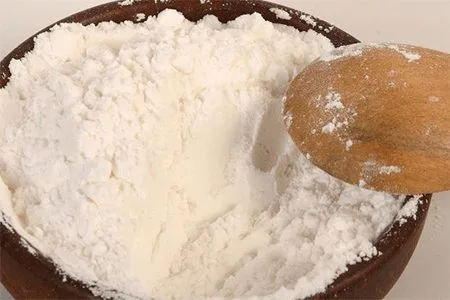 Ammonium bicarbonate
Ammonium bicarbonate
WHAT IS AMMONIUM BICARBONATE?
Ammonium bicarbonate or ammonium hydrogen carbonate is an inorganic chemical substance with the chemical formula NH4HCO3, which consists of bicarbonate anion and ammonium cation. Ammonium bicarbonate is available in both industrial (Chemical grade) and food grade (Food grade) forms. Ammonium bicarbonate causes irritation in the skin, eyes and respiratory system. This inorganic compound exists as a white solid and in two industrial and edible grades.
This product is produced in two grades of edible Powdered Ammonia and industrial Powdered Ammonia. RAHA Oil Co offers Powdered Ammonia produced with the best quality from its prominent producers in the country as well as its foreign sample such as Chinese Powdered Ammonia to its valued customers. Powdered Ammonia has many applications in different industries in two forms: edible Powdered Ammonia and industrial Powdered Ammonia. Depending on the quality of the product, the volume of purchase and the country of manufacture, the price of Powdered Ammonia will be different.
- Product Name: Ammonium Bicarbonate
- Chemical formula of ammonium bicarbonate: NH4HCO3
- Appearance: white solid
- Packaging: 25 kg bag
TECHNICAL SPECIFICATIONS
This substance has many uses in various industries, especially as an additive in the food industry with the number E503, and it is mostly used as an additive in various industries to increase the final quality of the product. Ammonium bicarbonate is a colorless or white solid and is an inorganic compound. In the vicinity of water and heat, ammonium bicarbonate decomposes into ammonia, carbon dioxide and water, which are all the factors that cause the dough to rise. This compound is added to the dough as a solution in water and dry. Addition of ammonium bicarbonate to food eventually causes the products to become crispy, light and soft. Heat is one of the most important factors for activating the chemical reactions of this compound and actually the factor for puffing in a baked product. In the past, this substance has been named as bicarbonate of ammonia and deer antler. Traditionally, baking ammonia was a byproduct of deer antler grinding and liming, and this compound was also used in food instead of baking powder. In products whose humidity is more than 3%, the smell of ammonia remains, while baking powder does not leave such a smell.
OTHER NAMES OF AMMONIUM BICARBONATE
Ammonium bicarbonate is known by many names, which indicates the long history of using this compound. Among other things, it is known by the names of ammonium bicarbonate, ammonium hydrogen carbonate, ammonium acid carbonate, monoammonium carbonate, monoammonium salt of carbonic acid and powdered ammonia.
PHYSICAL AND CHEMICAL PROPERTIES OF SODIUM BICARBONATE
As it was said, ammonium bicarbonate is of open type and in the form of white and crystalline powder. This substance is dissolved in water and forms a relatively alkaline solution, but ammonium bicarbonate is insoluble in acetone and alcohols. As the temperature increases, the solubility of ammonium bicarbonate in water increases. This reaction is endothermic and causes the water temperature to decrease. This composition consists of one element of nitrogen, five elements of hydrogen, one element of carbon and three elements of oxygen.
PRODUCTION OF AMMONIUM BICARBONATE
In this method, after charging the ammonia solution in the reactor, carbon dioxide gas is injected into the reactor. It is easy to control this reaction and crystallization is the most important step in it. The reaction of forming ammonium bicarbonate is an exothermic reaction, but the reaction between carbon dioxide gas and ammonia solution is exothermic. In order to produce crystals of the right size (for easier and better separation), the heat from the reaction must be removed, and the temperature must be controlled when this reaction takes place. Finally, after the formation of crystals and the completion of the reaction, the contents of the reactor are emptied and the crystals are dewatered with the help of a centrifuge. If needed, ammonium bicarbonate crystals are dried in a dryer.
Another method of preparing ammonium bicarbonate: First, industrial ammonium carbonate is charged in a reactor containing water at 50 degrees Celsius, and then carbon dioxide gas is injected into the resulting solution. Next, by controlling the temperature (decrease in temperature), ammonium bicarbonate crystals appear, and in the last step, the contents of the reactor are emptied and the crystals are dewatered with the help of a centrifuge.
REACTIONS OF AMMONIUM BICARBONATE
Reaction of ammonium bicarbonate with water: During an endothermic reaction, it is completely dissolved in water and following this reaction, ammonium bicarbonate decomposes into ammonia, CO2 or carbon dioxide and water, which is as follows:
NH4HCO3 → NH3 + H2O + CO2
Reaction of ammonium bicarbonate with acid: During the reaction with acids, for example hydrochloric acid, ammonium salts are produced.
NH4HCO3 + HCl → NH4Cl + CO2 + H2O
The reaction of ammonium bicarbonate with alkali: the final product of this process is the synthesis of ammonia.
The reaction of ammonium bicarbonate with sulfates of alkaline earth metals: the products of this reaction are carbonates of alkaline earth metals and in the form of deposits. For example, consider the following reaction:
CaSO4 + 2 NH4HCO3 → CaCO3 + (NH4)2SO4 + CO2 + H2O
Ammonium bicarbonate reaction with alkali metal halides: the products of this reaction are alkali metal bicarbonate and ammonium halide. Some examples are given below:
NH4HCO3 + NaCl → NH4Cl + NaHCO3
NH4HCO3 + KI → NH4I + KHCO3
NH4HCO3 + NaBr → NH4Br + NaHCO3
THE DIFFERENCE BETWEEN AMMONIUM BICARBONATE AND BAKING POWDER AND BAKING SODA
- Powdered Ammonia does not react at room temperature, and for this reason, the pastes in which this substance is used have a longer shelf life.
- In the vicinity of water and heat, Powdered Ammonia reacts quickly and makes the dough homogenous.
- Compared to baking powder, Powdered Ammonia gives the product a slightly brown color and creates a porous and crispy structure in it.
- When cooking with Powdered Ammonia, a pungent smell is emitted, which disappears completely by cooking at a temperature above 60 degrees Celsius.
- In the production of products with a moisture content higher than 3%, the smell of ammonia remains, but baking powder does not leave such a smell
APPLICATION OF AMMONIUM BICARBONATE
Since ammonium bicarbonate has two edible and industrial grades, it is often used in various industries as an additive to increase the quality of the final product.
1- Fermentation agent in the production of bread, biscuits and sweets
 Ammonium bicarbonate usage
Ammonium bicarbonate usage
FERMENTATION HAS THE FOLLOWING ADVANTAGES:
- Microorganisms produced during the fermentation process also have metabolic properties and produce several types of B vitamins.
- During the fermentation process, acid and alcohol are produced, which stop the growth and destruction of pathogenic microorganisms and therefore strengthen the health of dough and bread.
- During the fermentation process, aromatic substances are produced, which creates a pleasant taste and aroma in the bread.
- A decrease in pH due to the production of acid and the creation of a colloidal state of gluten causes a longer shelf life in bread.
2- In the composition of fire extinguishing materials
3- In the preparation of ammonium salts
4- In the production of pharmaceuticals
5- As fertilizer and soil enhancer
 Ammonium bicarbonate usage
Ammonium bicarbonate usage
- Among the uses of Powdered Ammonia in the industry, the following can be mentioned:
- Application of Powdered Ammonia in food industry
- The produced microorganisms produce several types of B vitamins.
- During the fermentation process, the acid and alcohol produced stop the growth and destroy the microorganisms.
- Creating a colloidal state of gluten increases the shelf life of bread.
- Fermentation agent in the production of bread, biscuits, sweets, cookies
- Creating a pleasant taste and aroma in dough and bread
- Strengthening the hygiene of dough and bread
- Facilitator for working with dough
- The factor that causes the dough to rise by releasing CO2
- Decrease in pH due to acid production
- Creating a porous and crispy structure, especially in crackers, biscuits and layered sweets.
- As an acidity regulator and food stabilizer
Its use as a fertilizer is not competitive with other ammonium compounds. In the past, it was used as a cheap nitrogen fertilizer in China, but it has been replaced by urea due to the relatively low quality and instability of Powdered Ammonia.
6- As a sediment cleaner
This compound is used as a cleaner and remover of deposits of heat exchangers and boilers, so that Powdered Ammonia reacts with calcium deposits and dissolves it in itself. If the layer of deposits created is thin, the use of Powdered Ammonia alone is sufficient, otherwise, the use of a mixture of Powdered Ammonia and dilute hydrochloric acid (HCl) will have a favorable result.
7- In the production of sponge rubber
 Ammonium bicarbonate usage
Ammonium bicarbonate usage
8- In ceramic industries
9- In the preparation of plant fertilizers (Compost)
10- In plastic and rubber industries
11- In a leather tannery
12- In the synthesis of some catalysts
As mentioned, Powdered Ammonia has wide applications and in some cases it can be replaced with other materials. Among these cases, he mentioned the replacement of Powdered Ammonia as a fertilizer and soil enhancer with urea, because the properties of urea are more favorable compared to Powdered Ammonia. Also, instead of using this substance in the food industry for fermentation, sodium bicarbonate (baking soda) can be used.
 Ammonium bicarbonate usage
Ammonium bicarbonate usage
APPLICATION OF AMMONIUM BICARBONATE AS FERTILIZER AND SOIL CONDITIONER
As a fertilizer, this substance cannot compete with other ammonium compounds. In the past, this substance was used as a cheap nitrogenous fertilizer in China, but due to the low quality and instability of Powdered Ammonia, it has been replaced by urea.
This fertilizer is used in agricultural industries and in laboratories as an identifier.
SPECIFIC PROPERTIES OF UREA FERTILIZER
Urea is a type of nitrogen fertilizer that has 46% nitrogen and has a reasonable price. Due to its cheap price and high nitrogen content, urea has almost become a good substitute for ammonium nitrate as a fertilizer.
ADVANTAGES OF USING UREA FERTILIZER CORRECTLY:
- It has a lot of oxygen and is suitable for agriculture
- Suitable for use in soil and agricultural and garden crops
- Non-flammable and non-hazardous (storage is not dangerous)
- This fertilizer is used alone and together with other fertilizers.
- The production cost of urea fertilizer is reasonable because it is obtained from natural sources.
- Reducing the cost of transportation and storage
- Reducing the production of pollutants
APPLICATION OF AMMONIUM BICARBONATE IN SEDIMENT CLEANER
This compound is used as a cleaner and remover of sediments in the pipes of heat exchangers and boilers. Powdered ammonia reacts with calcium deposits and dissolves it in itself. If the deposit layer that is formed is thin, the presence of powdered ammonia is enough to remove it, otherwise, a mixture of Powdered ammonia and dilute hydrochloric acid can be used to remove the deposits.
APPLICATION OF AMMONIUM BICARBONATE IN ARTIFICIAL COLORS
Artificial colors are used in foods such as: (energy drinks, condiments, breakfast cereals, ice cream and popsicles, jelly, chips, popcorn, sauces, canned products, etc.). Some of these chemicals are dangerous and carcinogenic, which cause severe allergic reactions in children. According to studies, these colors cause hyperactivity disorder in children.
APPLICATION OF AMMONIUM BICARBONATE IN COSMETICS INDUSTRY
It is used in cosmetics and health industries to balance the pH of the reaction environment, as a buffer, and also in personal care products.
APPLICATION OF AMMONIUM BICARBONATE AS A BUFFERING AGENT
For solubilization in the laboratory, this compound is used to buffer solutions so that they become slightly alkaline during chemical purification, such as high-performance liquid chromatography. Since it is completely decomposed into volatile compounds, it is possible to quickly recover the desired compound using the freeze drying method.
OTHER USES OF AMMONIUM BICARBONATE:
- The birth of sponge rubber
- Ceramic making
- plant fertilizer
- Pharmaceutical industries such as expectorant cough syrup
- Plastic and rubber industries
- leather tanning
- Catalyst synthesis
- Ammonium salts
- Fire extinguishing, production of fire retardant materials and special fire clothes
- In order to degrease products
- Frozen dairy products
AMMONIUM BICARBONATE SAFETY GUIDE (AMMONIUM BICARBONATE MSDS)
The type of dealing with the substance from a safety point of view depends on the toxicity and physical form of the substance. The most dangerous way to enter the toxic substance into the body is the respiratory system. that some substances can cause diseases such as cancer, damage to the fetus, genetic defects, sterility, reducing the possibility of pregnancy, death of the fetus, chromosomal mutation or basic defects after the birth of the fetus in a person.
- Powdered Ammonia can also cause skin and eye irritation and respiratory problems.
- Long-term exposure to Powdered Ammonia can cause bronchitis with cough or shortness of breath.
- It is important to know that the effects of exposure to Powdered Ammonia may appear and take effect over a long period of time and after months or even years.
- When working with chemicals, it is better to use a mask and gloves, and the place should be well ventilated.
PACKAGING AND STORAGE CONDITIONS OF AMMONIUM BICARBONATE
- The packaging of these compounds is a 25 kg polyethylene bag and should be kept at a temperature below 15 degrees Celsius.
- Ammonium bicarbonate should be stored in a sealed container such as glass with a vented lid.
- Store in a dry and cool place to avoid freezing.
- Storing ammonium bicarbonate in inappropriate temperature conditions and in hot or humid places causes it to clump and as a result reduce the quality of products in which this substance is used in their composition.
- Also, exposing this compound to air will cause ammonia to evaporate and reduce the quality of Powdered Ammonia .
TECHNICAL DATA SHEET OF AMMONIUM BICARBONATE
NO Product name Ammonium bicarbonate
1 molecular mass 79.056 g/mol
2 density 1.586 grams per cubic centimeter
3 melting temperature 41.9 degrees Celsius (107.4 degrees Fahrenheit, 315 degrees Kelvin)
4 pH (0.1 normal solution) 7.8 (at 25°C)
5 Appearance White powder
6 Solubility (grams per 100 ml) Soluble in water (24.8 at 25°C) insoluble in alcohol
7 Purity percentage 99.5 percent
8 Chlorine less than 0.003 percent
9 Sulphate less than 0.007 percent
10 Arsenic Less than 0.0002 percent
11 Heavy elements Less than 0.0005 percent
12 Sulphite Less than 0.0002 percent
13 Dry residue percentage less than 0.029 percent
14 The remaining percentage of non-volatile substances less than 0.3 percent
15 fiber less than 0.005 percent
16 Moisture percentage less than 0.4 percent
For more information, please Contact our Sales Team.

